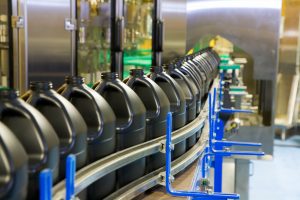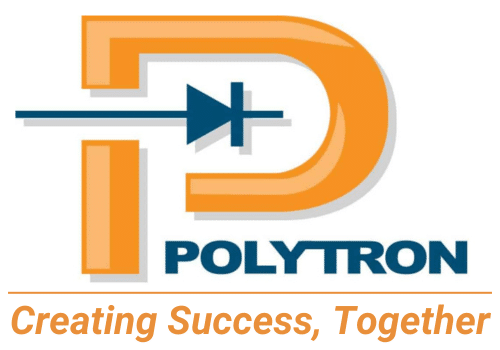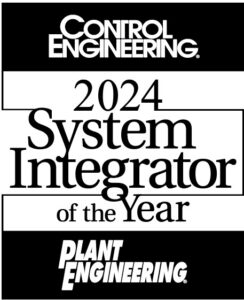Underperforming bottling lines caused inefficiency and lower profitability for a global consumer goods manufacturer due to obscurities about the source of performance issue.
The bottling line needed upgrades to improve performance by meeting KPIs, mitigating investment risk, and meeting the growing market demand. The biggest challenge was clearly understanding the extent of the performance issue across the entire line.
A comprehensive line audit and an exact 3-D simulation model of the production line created clarity about issues and showed that replacing the culprit machine would reveal underlying problems that could be remedied. With emulation, shutting down production lines is prevented resulting in reduced operational costs and avoiding a costly capital expansion.
Challenge |
Solution |
Results |
| Address underperforming bottling lines to increase production by 50% | Comprehensive line audit and exact 3-D simulation model of the production line create clarity about issues and reveal that replacing the culprit machine would create new problems. | OEE and line output were doubled by slowing the line:
The increased output expanded capacity so that other lines could be temporarily idled, which reduced operational costs and postponed the need for a multimillion dollar capital expansion. |
The Project
Digital Twin Modeling Provides Clarity
A well-known global consumer goods manufacturer had several bottling lines that were underperforming, and the Corporate Engineering VP was under pressure to make upgrades and improvements to meet performance goals:
- Meeting KPIs
- Mitigating investment risk
- Meeting growing market demand
Lines needed to operate more efficiently and profitably. Their goal was always clear: Increase production by 50 percent.

Seeking Clarity about the Issue
Additionally, the engineering VP faced a common problem: uncertainty about the best way to address the highly complex issue. With multiple variables to consider, plotting the best path to a solution seemed hopelessly time consuming at best and impossible at worst.
This sense of overwhelm often causes manufacturing leaders to believe they have little choice but to patch problems instead of getting to the root cause and implementing an effective solution.
Focused on the Wrong Problem
The source(s) of the issue remained unresolved, and the team fixated on the line speed and throughput. They identified the filler as the source of the poor performance and capacity limitation problem.
Coupled with improved bottle handling, it offered 300 bpm capacity, but uncertainty about its effectiveness in light of the output goal remained.
What they really needed was a way to clearly see the breadth of the performance issue across the entire line.
The First Step Toward Strategic Certainty
The manufacturer hired Polytron based on the company’s reputation as an industry expert and its understanding of their bottling line operation. Polytron’s engineers began with a comprehensive line audit to collect baseline performance data, and using a PolySim Emulation, created an exact 3-D simulation model of the production line. This “digital twin” reflected current conditions and inefficiencies by mirroring the line on their plant floor.
Using the line emulation, they could test nearly any imaginable scenario to provide pre-visualization of how well changes to the line would run when optimized.
This provided not only clarity about the problem and certainty about solutions but suggested some surprising and even counter-intuitive insights prompting a road map of next steps.
Equipment Issues Identified
The PolySim emulation predicted that, after replacing the culprit filler machine with one that had a higher throughput, additional problems would arise elsewhere on the line:
- Any time one machine in the line faulted, it almost immediately stopped all upstream machines, creating “micro stops” and significant performance losses.
- Each machine on the line was operating as an “island of automation,” being stopped and started arbitrarily based online faults and back-up conditions governed more by the instincts of the operators and less by good information.
Using Emulation to Test Options Creates a Clear Path
The new filler machine could run at 300 bpm and was installed to increase the overall pace of the line. Along with the blow molder, it was capable of over-supplying the filler when set at 250 bpm.
Now attention turned to the machines downstream of the filler. They needed to be set at progressively increasing bottling rates, with the capability to modulate speeds based upon bottle population.
Finally, Polytron engineers recommended adding two minutes of bottle accumulation post-filler. This would buffer downstream hiccups and keep the filler, the line constraint, running optimally. Without the modeling, it would have seemed counter-intuitive to slow the line down to increase throughput.
Results: Emulation Solution Unexpectedly Leads to Doubled OEE
Polytron demonstrated that, by adding two minutes of buffer to the line, integrating machine and conveyor controls, and modulating machine speeds around a target filler speed of 250 bpm, the client could achieve twice the Overall Equipment Effectiveness (OEE) and a much higher output of the line – more than two times what they were achieving. How? Surprisingly… by slowing the line down.
The client’s Vice President of Global Engineering and his team were shocked to realize that slowing the line down increased output.
Confident of the solution, and to everyone’s surprise, the changes made to this one line would be so effective that one or two of the other lines previously needed to meet market demands could actually be moth-balled temporarily.
Shutting down these lines would reduce operational costs and eliminate, or at least postpone the need for a multi-million dollar capital expansion.
Major Benefits of Emulation
- Lowers overall investment risk
- Reduces on-site testing time and costs for shorter startup time
- Removes logic controls testing from the project’s critical path
- Allows controls testing earlier in the project cycle
- Tests multiple scenarios without wasting materials
- Increases control system quality
- Improves working conditions for controls engineer by safer testing
- Improves operator training and minimizes disruptions to existing production
- Makes overall project duration simpler to forecast and budget
- Allows 95% debugging and verification before installation




